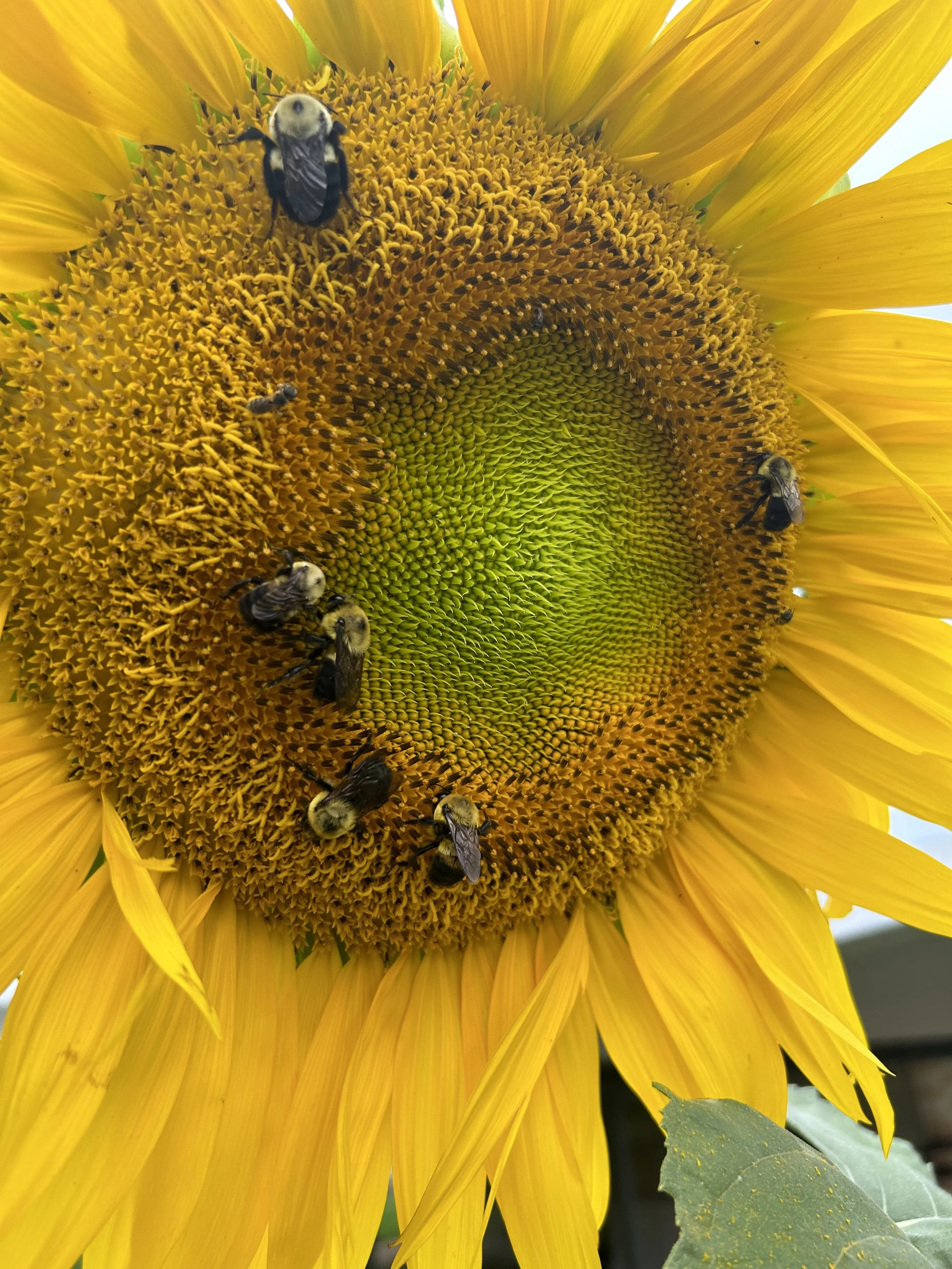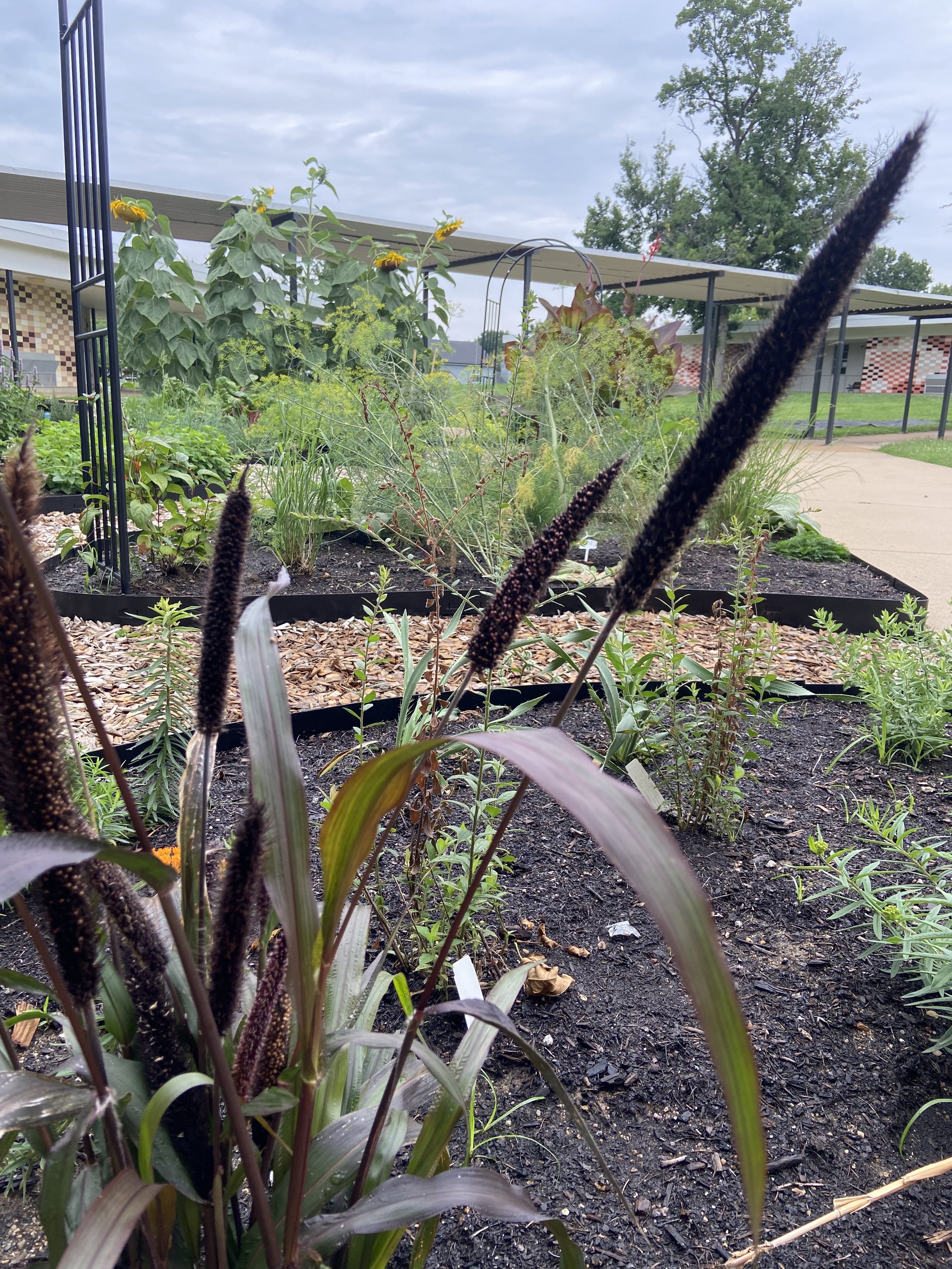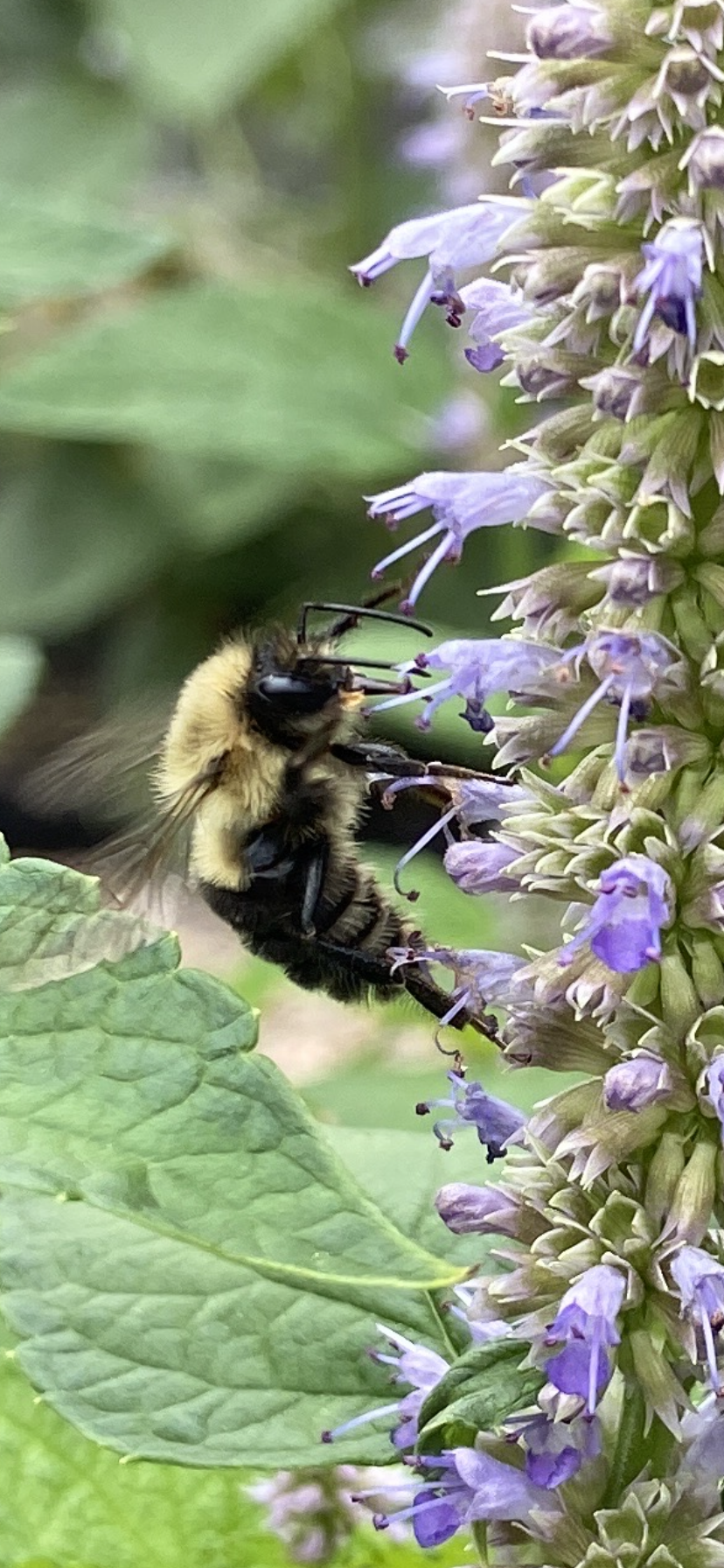Summer Bounty
Bumble Bees — including Brown-belted Bumble Bees and Common Eastern Bumble Bees — feast in a sunflower. Photo by Javon Calmese
Thanks to lead gardener Valaree Logan and Project Lab intern Javon Calmese, our garden is flourishing even through the blazing heat of an especially blazing couple of weeks in St. Louis. In June we set up our project with iNaturalist, and now — with local bumble bees showing up to forage — we’re contributing data to the national data base under the auspices of the Smithsonian’s PolliNationDC project. Hurray! When our students return to school in a few weeks, they’ll find an outdoor learning space ripe for exploring.
In addition to the sunflowers, plants that are especially thriving include swiss chard, anise hyssop, and the millet (shown at left, above). In the photo on the right, I managed to capture a bumble bee foraging in an anise hyssop blossom. Getting these photos is pretty challenging for me, although Javon definitely makes it looks easy! I turned for counsel to Robert Costello of the Smithsonsian’s National Museum of Natural History. Robert explained that when bumble bees are feeding, their wings cover their abdomen, which is the body part you need to see to make an identification. The goal is to get a view of the abdomen and thorax. I plan to meet up with Val and Javon in the garden this morning to practice some more. —Inda


